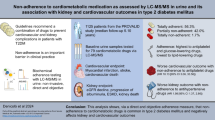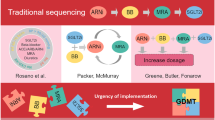Abstract
Introduction/objectives
To investigate the role of urate-lowering therapy (ULT) in the prevention of cardiovascular disease (CVD) in patients with asymptomatic hyperuricemia using the Japanese healthcare record database.
Methods
This retrospective cohort study used data from the JMDC Claims Database, which includes records of medical check-ups and Japanese health insurance claims. Subjects aged at least 18 years with a serum uric acid (sUA) level ≥ 7.0 mg/dL and at least one medical check-up from January 2007 to August 2021 were included in this study. The exposure was any ULT prescription, and the primary outcome included composite CVD outcomes, including coronary artery disease, stroke, and atrial fibrillation. Analysis was performed with a new-user design and overlap weighting to balance the baseline characteristics of the subjects. Cox proportional hazards models were used to investigate the association between ULT and the development of CVD.
Results
In total, 152,166 patients were included in the main analysis before overlap weighting in this retrospective cohort study. The number of subjects in the ULT group was 5,270, and there were 146,896 subjects in the control group. Composite CVD outcomes were observed in a total of 7,703 patients. The risk of developing composite CVD outcomes was not different between the ULT group and the control group (HR: 1.01, 95% CI: 0.89 to 1.13).
Conclusions
ULT for patients with asymptomatic hyperuricemia did not prevent the development of CVD based on the Japanese claims database.
Key points |
• Among subjects with asymptomatic hyperuricemia, ULT was not associated with a lower risk of CVD • There was no appropriate cutoff for initiating ULT in patients with asymptomatic hyperuricemia • There was no appropriate cutoff as the therapeutic goal of ULT in patients with asymptomatic hyperuricemia |


Similar content being viewed by others
Data availability
Data sharing is not permitted under the JMDC policy. If readers are interested in our dataset, please contact JMDC for data availability (https://www.jmdc.co.jp).
Change history
26 January 2024
A Correction to this paper has been published: https://doi.org/10.1007/s10067-024-06866-y
References
Benjamin EJ, Blaha MJ, Chiuve SE, Cushman M, Das SR, Deo R, De Ferranti SD, Floyd J, Fornage M et al (2017) Heart Disease and Stroke Statistics’2017 Update: A Report from the American Heart Association. Circulation 135:146–603. https://doi.org/10.1161/CIR.0000000000000485
Fang J, Alderman MH (2000) Serum uric acid and cardiovascular mortality: The NHANES I Epidemiologic Follow-up Study, 1971–1992. J Am Med Assoc 283(18):2404–2410. https://doi.org/10.1001/jama.283.18.2404
Feig DI, Duk-Hee Kang RJJ (2008) Uric acid and cardiovascular risk. N Engl J Med 359:1811–1821. https://doi.org/10.1016/S1471-4892(02)00143-1
Seki H, Kaneko H, Morita H, Itoh H, Morita K, Matsuoka S, Kiriyama H, Kamon T, Fujiu K et al (2021) Relation of Serum Uric Acid and Cardiovascular Events in Adults Aged 20–49 Years. Am J Cardiol 152:150–157. https://doi.org/10.1016/j.amjcard.2021.05.007
MacIsaac RL, Salatzki J, Higgins P, Walters MR, Padmanabhan S, Dominiczak AF, Touyz RM, Dawson J (2016) Allopurinol and Cardiovascular Outcomes in Adults with Hypertension. Hypertension 67(3):535–540. https://doi.org/10.1161/HYPERTENSIONAHA.115.06344
Yen FS, Hsu CC, Li HL, Wei JCC, Hwu CM (2020) Urate-Lowering Therapy May Prevent the Development of Coronary Artery Disease in Patients With Gout. Front Med 7:63. https://doi.org/10.3389/fmed.2020.00063
Richette P, Doherty M, Pascual E, Barskova V, Becce F, Castañeda-Sanabria J, Coyfish M, Guillo S, Jansen TL et al (2017) 2016 updated EULAR evidence-based recommendations for the management of gout. Ann Rheum Dis 76(1):29–42. https://doi.org/10.1136/annrheumdis-2016-209707
FitzGerald JD, Dalbeth N, Mikuls T, Brignardello-Petersen R, Guyatt G, Abeles AM, Gelber AC, Harrold LR, Khanna D et al (2020) 2020 American College of Rheumatology Guideline for the Management of Gout. Arthritis Care Res 72(6):744–760. https://doi.org/10.1002/acr.24180
Hisatome I, Li P, Miake J, Taufiq F, Mahati E, Maharani N, Utami SB, Kuwabara M, Bahrudin U et al (2021) Uric acid as a risk factor for chronic kidney disease and cardiovascular disease - Japanese guideline on the management of asymptomatic. Circ J 85:130–138. https://doi.org/10.1253/CIRCJ.CJ-20-0406
Orkaby AR, Driver JA, Ho YL, Lu B, Costa L, Honerlaw J, Galloway A, Vassy JL, Forman DE et al (2020) Association of Statin Use with All-Cause and Cardiovascular Mortality in US Veterans 75 Years and Older. JAMA - J Am Med Assoc 324(1):68–78. https://doi.org/10.1001/jama.2020.7848
Li F, Thomas LE (2019) Addressing Extreme Propensity Scores via the Overlap Weights. Am J Epidemiol 188(1):250–257. https://doi.org/10.1093/aje/kwy201
Seeger JD, Kurth T, Walker AM (2007) Use of Propensity Score Technique to Account for Exposure-Related Covariates. Pharmacoepidemiol Drug Saf 45(10):143–148
Elze MC, Gregson J, Baber U, Williamson E, Sartori S, Mehran R, Nichols M, Stone GW, Pocock SJ (2017) Comparison of Propensity Score Methods and Covariate Adjustment: Evaluation in 4 Cardiovascular Studies. J Am Coll Cardiol 69(3):345–357. https://doi.org/10.1016/j.jacc.2016.10.060
Brookhart MA, Schneeweiss S, Rothman KJ, Glynn RJ, Avorn J, Stürmer T (2006) Variable selection for propensity score models. Am J Epidemiol 163(12):1149–1156. https://doi.org/10.1093/aje/kwj149
Kojima S, Matsui K, Hiramitsu S, Hisatome I, Waki M, Uchiyama K, Yokota N, Tokutake E, Wakasa Y et al (2019) Febuxostat for cerebral and cardiorenovascular events prevention study. Eur Heart J 40:78-1786A. https://doi.org/10.1093/eurheartj/ehz119
George J, Carr E, Davies J, Belch JJF, Struthers A (2006) High-dose allopurinol improves endothelial function by profoundly reducing vascular oxidative stress and not by lowering uric acid. Circulation 114(23):2508–2516. https://doi.org/10.1161/CIRCULATIONAHA.106.651117
Barazani SH, Chi W, Pyzik R, Chang H, Jacobi A, O’Donnell T, Fayad ZA, Ali Y, Mani V (2020) Quantification of uric acid in vasculature of patients with gout using dual-energy computed tomography. World J Radiol 12(8):184–194. https://doi.org/10.4329/wjr.v12.i8.184
Frančula-Zaninović S, Nola IA (2018) Management of Measurable Variable Cardiovascular Disease’ Risk Factors. Curr Cardiol Rev 14:153–163. https://doi.org/10.2174/1573403X14666180222102312
Zhu X (2014) Comparison of Four Methods for Handing Missing Data in Longitudinal Data Analysis through a Simulation Study. Open J Stat 04(11):933–944. https://doi.org/10.4236/ojs.2014.411088
Rathouz PJ (2007) Identifiability assumptions for missing covariate data in failure time regression models. Biostatistics 8(2):345–356. https://doi.org/10.1093/biostatistics/kxl014
White IR, Carlin JB (2010) Bias and efficiency of multiple imputation compared with complete-case analysis for missing covariate values. Stat Med 29(28):2920–2931. https://doi.org/10.1002/sim.3944
Yang F, Wittes J, Pitt B (2019) Beware of on-treatment safety analyses. Artic Clin TRIALS Clin Trials 16(1):63–70. https://doi.org/10.1177/1740774518812774
Chêne G, Morlat P, Leport C, Hafner R, Dequae L, Charreau I, Aboulker JP, Luft B, Aubertin J et al (1998) Intention-to-treat vs on-treatment analyses of clinical trial data: Experience from a study of pyrimethamine in the primary prophylaxis of toxoplasmosis in HIV-infected patients. Control Clin Trials. 19(3):233–48. https://doi.org/10.1016/S0197-2456(97)00145-1
Ananth CV, Schisterman EF (2018) Hidden biases in observational epidemiology: the case of unmeasured confounding. BJOG An Int J Obstet Gynaecol 125:644–6. https://doi.org/10.1111/1471-0528.14960
Vanderweele TJ, Arah OA (2011) Bias formulas for sensitivity analysis of unmeasured confounding for general outcomes, treatments, and confounders. Epidemiology 22(1):42–52. https://doi.org/10.1097/EDE.0b013e3181f74493
Lund JL, Richardson DB, Stürmer T (2015) The Active Comparator, New User Study Design in Pharmacoepidemiology: Historical Foundations and Contemporary Application. Curr Epidemiol Rep 2(4):221–228. https://doi.org/10.1007/s40471-015-0053-5
Johnson ES, Bartman BA, Briesacher BA, Fleming NS, Gerhard T, Kornegay CJ, Nourjah P, Sauer B, Schumock GT et al (2013) The incident user design in comparative effectiveness research. Pharmacoepidemiol Drug Saf 22(1):1–6. https://doi.org/10.1002/pds.3334
Acknowledgements
We thank the editing service “American Journal Experts” for proofreading our manuscript.
Funding
This work was supported by a Grant-in-Aid for Scientific Research from the Japan Society for the Promotion of Science (grant number: 20H03941). The funder and the data provider had no role in the present study, including collection, management, analysis, and interpretation of the data; preparation, review, or approval of the manuscript; and decision to submit the manuscript for publication.
Author information
Authors and Affiliations
Contributions
All authors meet the International Committee of Medical Journal Editors (ICMJE) criteria for authorship of this article. They also reviewed the manuscript critically for important intellectual content and have given their approval for the final version to be published.
H.H. contributed to the conception and design of the work; the acquisition, analysis, and interpretation of data; and the drafting of the manuscript. M.T. contributed to the analysis and interpretation of the work. K.K. contributed to the conception of the work and the acquisition of data for the work. All authors agreed to be accountable for all aspects of the work in ensuring that questions related to the accuracy or integrity of any part of the work are appropriately investigated and resolved.
Corresponding author
Ethics declarations
Ethics approval
This study was approved by the Institutional Review Board at Kyoto University. We performed this study in accordance with the ethical standards laid out in the 1964 Declaration of Helsinki and its later amendments. The data were obtained by contract from JMDC Inc. and permission was obtained to use them in the study and to publish the results in a scientific paper. Individual consent was not needed because the data were anonymized.
Competing interests
Koji Kawakami has received research funds from Eisai Co., Ltd., Kyowa Kirin Co., Ltd., Sumitomo Pharma Co., Ltd., Mitsubishi Corporation, and Real World Data Co. Ltd.; consulting fees from LEBER Inc., JMDC Inc., Shin Nippon Biomedical Laboratories Ltd., and Advanced Medical Care Inc.; executive compensation from Cancer Intelligence Care Systems, Inc.; and honoraria from Mitsubishi Corporation, Pharma Business Academy, and Toppan Inc. Other authors have no conflicts of interest to declare.
Additional information
Publisher's note
Springer Nature remains neutral with regard to jurisdictional claims in published maps and institutional affiliations.
The original online version of this article was revised: Tables 1 to 4 has been updated.
Supplementary Information
Below is the link to the electronic supplementary material.
Rights and permissions
Springer Nature or its licensor (e.g. a society or other partner) holds exclusive rights to this article under a publishing agreement with the author(s) or other rightsholder(s); author self-archiving of the accepted manuscript version of this article is solely governed by the terms of such publishing agreement and applicable law.
About this article
Cite this article
Hashimoto, H., Takeuchi, M. & Kawakami, K. Association between urate-lowering therapy and cardiovascular events in patients with asymptomatic hyperuricemia. Clin Rheumatol 42, 3075–3082 (2023). https://doi.org/10.1007/s10067-023-06710-9
Received:
Revised:
Accepted:
Published:
Issue Date:
DOI: https://doi.org/10.1007/s10067-023-06710-9




